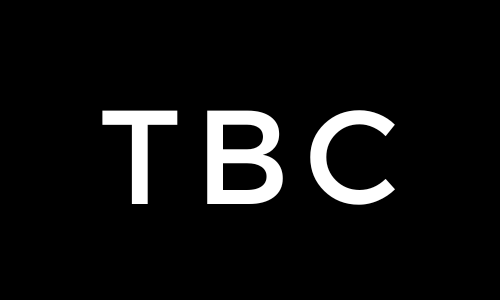Building a blog takes time, effort, and creativity—and nothing is worse than seeing all that hard work copied or claimed by someone else. That’s where trademarks come in. If you’re new to trademarks, think of them as legal protection for your brand’s identity. Let’s walk through why trademarks matter, how to get one, and some cautionary tales from those who missed the mark.
What is a Trademark?
In simple terms, a trademark is a form of legal protection for unique elements of your brand, like your blog’s name, logo, or tagline. When you trademark something, you gain the exclusive right to use it in specific categories, preventing others from using or imitating it. This legal shield can be invaluable as you grow your online presence, ensuring that your audience recognizes your blog and only your blog as the source of your content.
Why Trademarks Matter for Bloggers
- Protect Your Brand Identity: Your blog’s name, logo, and unique style are what sets you apart. Trademarks ensure these elements are legally yours, preventing competitors from confusing your readers or siphoning off your hard-earned traffic.
- Avoid Costly Rebranding: Imagine investing years in a blog only to receive a cease-and-desist letter because someone else trademarked a similar name. This can force you into a time-consuming and expensive rebranding process, costing you both money and your established audience’s trust.
- Increase Your Brand’s Value: A trademarked brand is a secure brand, and this protection adds value. Should you ever decide to sell your blog, having a registered trademark can boost its worth, offering buyers peace of mind that the brand is protected.
Real-Life Lessons from Trademarks Gone Wrong
1. Kate Spade vs. Kate Spade Home

Kate Spade, a fashion brand famous for handbags and accessories, learned the importance of trademark specificity the hard way. While their trademark protected them in fashion, it didn’t cover home goods. This small oversight allowed a competitor to use “Kate Spade” in their home decor line. This type of confusion reminds us of the importance of covering all potential categories that relate to your brand.
2. Blue Ivy vs. Blue Ivy Events

Beyoncé and Jay-Z’s attempt to trademark their daughter’s name, “Blue Ivy,” faced resistance from a wedding planning company with the same name. The pre-existing Blue Ivy Events owned the rights to the name in the events space, leading to a lengthy legal battle. For bloggers, this highlights the need to trademark sooner rather than later before another business stakes a claim.
3. McDonald’s vs. Supermac’s

McDonald’s tried to prevent a small Irish fast-food chain, Supermac’s, from expanding in Europe, citing its trademark on “Big Mac.” The European Union ruled in favor of Supermac’s, noting that McDonald’s failed to prove consistent use of the “Big Mac” trademark in Europe. This case emphasizes the importance of defending your trademark actively and maintaining it properly.
How to Get a Trademark: Step-by-Step Guide
- Research Your Name
Start by searching the United States Patent and Trademark Office (USPTO) website (or equivalent in your country) to see if your blog name, logo, or tagline is already taken. This can save you from legal trouble later and give you peace of mind that your brand is unique. - Consult a Trademark Attorney
While you can file for a trademark on your own, working with a professional can ensure you avoid errors. Lawyers can also help you identify the correct categories for your trademark, making sure all relevant areas are covered. - File with the USPTO (or Your Country’s Trademark Office)
In the United States, you’ll submit an application via the USPTO, which will guide you through the process of classifying your trademark under specific “classes” like entertainment, apparel, or online content. Filing costs can vary based on the number of classes you select. - Monitor and Defend Your Trademark
After your trademark is approved, it’s your responsibility to monitor for potential infringement. If someone else tries to use a similar name or logo, consult your attorney to determine if legal action is necessary.
Where to Apply for a Trademark
Tips for Trademarking as a Blogger
- Start with Your Blog Name: Your name is likely the most recognizable part of your brand, so prioritize it. Later, consider trademarking logos, taglines, and even specific phrases unique to your blog.
- Choose the Right Categories: If you blog about multiple topics, think about where your brand might grow. Are you planning to launch a product line or write an e-book? Make sure to select categories that cover potential expansions.
- Consider Trademark Protection Services: Companies like LegalZoom and Rocket Lawyer offer affordable trademark filing services and are affiliates we could promote. These services simplify the filing process and offer monitoring tools to alert you of possible infringement.
Got more questions?
If you prefer, you can send your detailed legal or tax questions to an attorney and get legal advice online or by phone from a lawyer who specializes in your issue.
Practical Advice: Protect Your Brand Early
The best time to trademark your brand is as soon as you know it’s the one you want to keep. Even if your blog is small, trademarking early can save you from costly rebranding or potential lawsuits down the line. Consider it an investment in your blog’s future stability.
Conclusion
For bloggers, trademarks offer a solid foundation of brand protection, adding security and credibility. The process may seem intimidating, but you can safeguard your brand effectively with the right resources and timely action. As your blog grows, this foundational protection becomes invaluable. So, take steps today to secure your brand’s identity before someone else does.
If you enjoyed or learned something valuable from this post, share it with others! For more blogging and affiliate marketing tips, subscribe to our newsletter and never miss an update.
Discover more from The Blog Channel
Subscribe to get the latest posts sent to your email.









